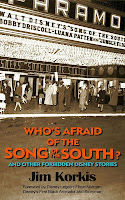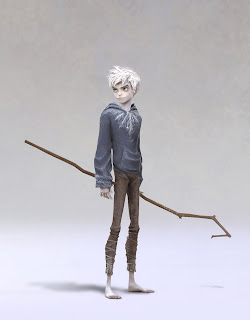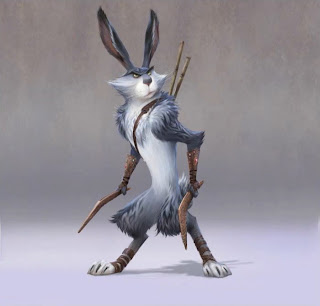Disney historian Jim Korkis's latest book is Who's Afraid of the Song of the South? and Other Forbidden Disney Stories. The main section of the book is an in-depth look at the production of the film that Disney has chosen to suppress.
While Korkis deals with the current controversy surrounding the film, he traces the film's origins and shows that the controversy started even before the film was released. In the period after World War II, when the U.S. had defeated a fascist power that claimed it was racially superior, Black Americans felt strongly that it was time for the United States to abolish its own discriminatory practices. That included the portrayal of Black people in popular culture. Black audiences were no longer satisfied with stereotypical screen portrayals of porters, maids and lazy or frightened comedy relief.
In the post-war years, Hollywood began to tackle discrimination in live action films such as Gentleman's Agreement (1947), which dealt with discrimination against Jews, and Pinky (1949), where a Black woman passes for White before returning to her own community. But it wouldn't be until the 1950s and the rise of Sidney Poitier before Black performers were cast in leading roles that were dramatically respectable.
Song of the South (1945) sits at the cusp between pre- and post-war racial attitudes and as Korkis shows, that's one of the things that makes the film hard to deal with. The various screenwriters included a southerner with typical racial views as well as a left-leaning victim of the blacklist. Black actor Clarence Muse was hired as a consultant, but left the project over the film's racial attitudes, yet Muse himself later appeared in films like Riding High (1950) and The Sun Shines Bright (1953), neither of which could be considered racially progressive. The reviews of the time also straddle changing racial attitudes, with some wholly praising the film while others expressing reservations on its treatment of race.
Korkis covers the writers, the cast, the production of the live action, the animation, the music, the reviews and the controversy surrounding the film. Beyond the race issue, the film is important for other reasons. It was Disney's first foray into a feature dominated by live action. It was photographed by Gregg Toland, cinematographer of The Grapes of Wrath (1940) and Citizen Kane (1941), and this was Toland's first film in colour. Bobby Driscoll and Luana Patten, the child stars in the film, went on to other star in other Disney films, making them the first live performers under contract to the studio. It was also the first Disney live action film to receive an Oscar, albeit an honorary one for James Baskette, who played Uncle Remus.
Korkis also writes about how the animated characters were used in other Disney projects such as Splash Mountain and various comics and other publications.
The balance of the book is a bit of a hodge podge, lacking the strong focus of the first 100 pages. Some of the material is related, such as the deleted Black centaurette in re-releases of Fantasia. While the material covered is interesting, such as Disney's failed attempts to craft films based on the Oz books and John Carter of Mars before the films that were eventually released, this material could hardly be described as "forbidden." Korkis is a thorough historian and the material is interesting, but as a book, it doesn't hang together as strongly as it might.
Be that as it may, there's a wealth of interesting Disneyana here. Korkis's dedication to shining light into the nooks and crannies of Disney history always produces surprises for the reader and fills out the picture of Walt Disney and the company he created. As the current Disney management would prefer to forget the existence of Song of the South, this book serves as the closest the film is likely to get to a "making of" book.
animated backgrounds ,for websites windows ,desktop backgrounds,flashing gif,art graphics,pictures,photo,image,icon,videos,
Sunday, December 30, 2012
Saturday, December 29, 2012
Rise of the Guardians (2012) - Character Design
© DreamWorks Animation
Character Shapes
Jack Frost Concepts
by Shane Prigmore
by Shane Prigmore
by Shane Prigmore
by Shane Prigmore
by Shane Prigmore
by Shane Prigmore
by Shane Prigmore
by Shane Prigmore
by Shane Prigmore
by Shane Prigmore
by Ryan O'Roughlin, Nate Wragg, Takao Noguchi & Others

North Concepts

by Takao Noguchi, Ryan O'Loughlin, Dave Derrick, Louie del Carmen & Nate Wragg

Bunnymund early concepts by Nico Marlet
Felix Yoon, Gabe Hordos & Others
Concept Painting by Patrick Hanenberger
Final Design by Tim Lamb
Sandman Concepts
Pitch Concepts

by Shane Prigmore

by Shane Prigmore
by Shane Prigmore
by Shane Prigmore

by Shane Prigmore
by Shane Prigmore
by Shane Prigmore

by Shane Prigmore
by Shane Prigmore
by Shane Prigmore
by Shane Prigmore
Drawing Tutorials:
Sources:
Subscribe to:
Posts (Atom)


























































































